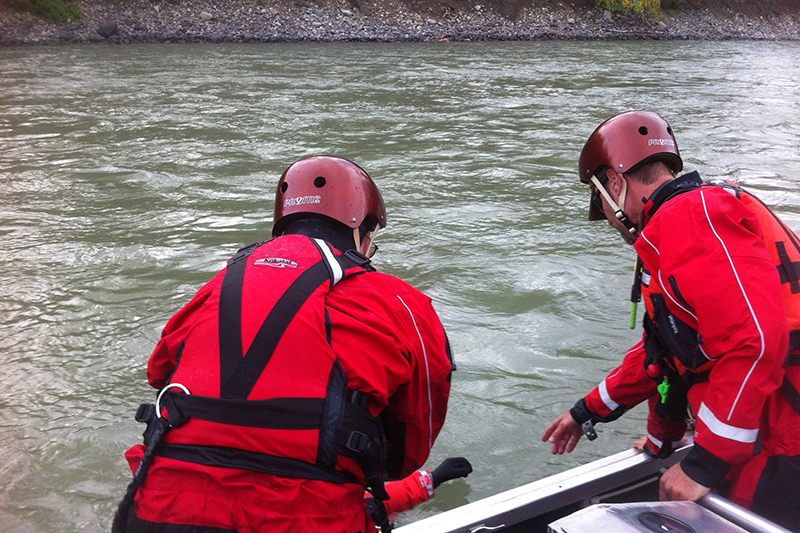[vc_row][vc_column][vc_column_text]Spring is in the air: the birds are singing; the snow and ice are melting; and our attention has turned to the recreational opportunities of the rivers, creeks, and lakes. Here are four tips to help you stay safe when recreating around rivers, creeks, and lakes.
*Please note: This is not a complete list of safety tips, rather a reminder of some points to think about before you recreate in swiftwater. For more water safety tips, visit AdventureSmart more in depth water safety article here.
by Oliver Holt
1. Be Informed
First and foremost, we recommend that you have the appropriate training and experience before venturing out for swiftwater activities. There are many educational resources out there. (Raven Rescue and Rescue Canada offer water safety courses). Go with a buddy or mentor that has experience and that you feel comfortable discussing potential hazards and risks.
Plan for your trip in advance. Know where you are going. Look at maps, read guides, and watch the weather.
Plan for your trip in advance. Know where you are going. Look at maps, read guides, and watch the weather.
2. Wear Appropriate Clothing and Gear for the Conditions
The water temperatures can be very cold. When exposed to cold water temperatures, our bodies lose heat rapidly which can result in hypothermia if not prepared with the right equipment and clothing–even if it is sunny and warm outside. Wear insulating layers under your waders or drysuit. Or, make sure your wetsuit is thick enough for the conditions. Monitor your body temperature and make adjustments before you get cold or start shivering. Bring extra warm clothing and a thermos with a warm liquid in case you get cold.
Always wear a properly fitting Personal Flotation Device (PFD) when around swiftwater no matter what time of year.
3. Know The River
Before planning a trip, become familiar with the geography. Look at maps and ask experienced locals for advice.
In Early Spring, the ice at the edge of streams and rivers can be thin. Think twice before stepping on ice.
Warmer temperatures or rain can cause streams and rivers to rise. It is recommended to look at current and previous water level histories. Earlier in spring, ice dams can form in canyons and when released they can cause flooding or a potentially dangerous increase of the water levels. The increase in water levels transports logs and other debris downstream, so be mindful of new hazards, especially sweepers and log jams. They commonly form on islands and the outside of river bends.
Earlier in spring, ice dams can form in canyons and when ‘released’ they can cause flooding or a potentially dangerous increase of the water levels.
4. Know Your Limits
Do a gut check. If something does not feel right, communicate your concerns with the group and assess the situation. It’s okay to say “no” or to modify plans to mitigate risk or address the group’s varied comfort levels. It is better to return another day than to get outside your comfort zone. Be aware of bias from previous experiences. Just because you have done something in the past, it does not mean the conditions or timing are right. [/vc_column_text][/vc_column][/vc_row]


